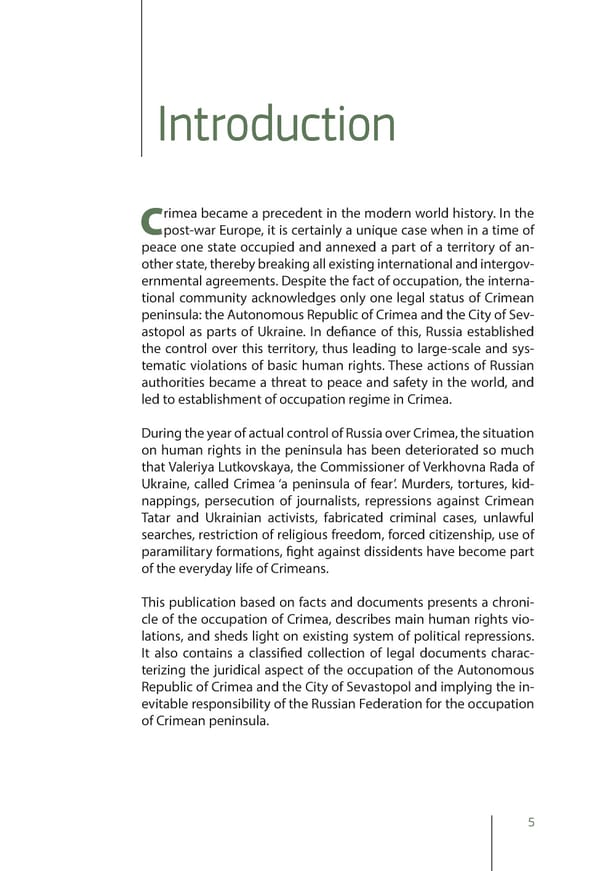Introduction rimea became a precedent in the modern world history. In the Cpost-war Europe, it is certainly a unique case when in a time of peace one state occupied and annexed a part of a territory of an- other state, thereby breaking all existing international and intergov- ernmental agreements. Despite the fact of occupation, the interna- tional community acknowledges only one legal status of Crimean peninsula: the Autonomous Republic of Crimea and the City of Sev- astopol as parts of Ukraine. In deR ance of this, Russia established the control over this territory, thus leading to large-scale and sys- tematic violations of basic human rights. These actions of Russian authorities became a threat to peace and safety in the world, and led to establishment of occupation regime in Crimea. During the year of actual control of Russia over Crimea, the situation on human rights in the peninsula has been deteriorated so much that Valeriya Lutkovskaya, the Commissioner of Verkhovna Rada of Ukraine, called Crimea ‘a peninsula of fear’. Murders, tortures, kid- nappings, persecution of journalists, repressions against Crimean Tatar and Ukrainian activists, fabricated criminal cases, unlawful searches, restriction of religious freedom, forced citizenship, use of paramilitary formations, R ght against dissidents have become part of the everyday life of Crimeans. This publication based on facts and documents presents a chroni- cle of the occupation of Crimea, describes main human rights vio- lations, and sheds light on existing system of political repressions. It also contains a classiR ed collection of legal documents charac- terizing the juridical aspect of the occupation of the Autonomous Republic of Crimea and the City of Sevastopol and implying the in- evitable responsibility of the Russian Federation for the occupation of Crimean peninsula. 5
 The Peninsula of Fear: Chronicle of Occupation and Violation of Human Rights in Crimea Page 4 Page 6
The Peninsula of Fear: Chronicle of Occupation and Violation of Human Rights in Crimea Page 4 Page 6